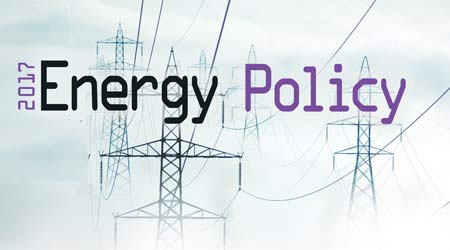Market-Driven Solutions Like Tenant Star Will Continue To Push Energy Efficiency Envelope
Fourth of a four-part cover story looking at how Trump Administration policy may affect energy policy for the road ahead.
Consumer-driven demand and actions taken at the tenant level are two of the reasons many experts expect the momentum for energy efficiency improvements to continue in commercial real estate. “I think that the consumer of commercial real estate is still the largest driver for behavior,” says Rachel Sowards, executive director at Paladino and Company, a real estate consulting firm. “As long as tenants are asking for it, then building owners and developers and managers are going to want to compete on those various criteria.”
One way this has begun to manifest itself is in the growing trend of green leasing. “Tenant engagement in energy efficiency is one of the new areas that’s really increasing the importance of energy efficiency,” says Cliff Majersik, executive director of the Institute for Market Transformation. This tenant/owner partnership on energy efficiency helps close the gap in facilities so that both the base building and the tenant space are contributing to energy efficiency goals. “Increasingly, landlords and tenants are looking for win-win leases where they’ll both come out ahead,” Majersik says.
To this end, EPA’s Energy Star program is authorized to develop a program called Tenant Star. It’s envisioned as a voluntary public-private program to label high performance leased spaces in commercial buildings as energy efficient, says Duane Desiderio, senior vice president and counsel for the Real Estate Roundtable. “Our position has always been that we need to incentivize owners to make their assets energy efficient,” says Desiderio. “But to really capitalize on those gains you need to make sure that the tenants and building occupants are designing their spaces efficiently and operating within them efficiently.”
Tenant Star was authorized in 2015, but the current administration will need to set up the framework to implement it. Both the Department of Energy and EPA would be involved in the program. “It’s something that we view as full steam ahead,” says Desiderio. Although Congress authorized the law under the previous administration, it’s the purview of the current administration to put the guidelines in place. The Real Estate Roundtable hopes to see the law implemented in a “voluntary but meaningful way that gives commercial landlords and tenants strong returns on their investments but at the same time conserves energy resources and puts us on a firmer path to energy security.”
ACTION ITEM: Take stock of planned capital improvement projects and organize them to capitalize on any anticipated incentives before such might no longer be available. “Look at all your capital improvements that are planned for the next one, three and five years and ensure that those are aligned with the business objectives of (your) organization, and stack them as priorities based on what incentives are available and how much that return on investment can be confirmed,” says Rachel Sowards, executive director at Paladino and Company, a real estate consulting firm. “Alignment, planning, and verifying. That will work regardless of the policies that are in place.”
Related Topics:















